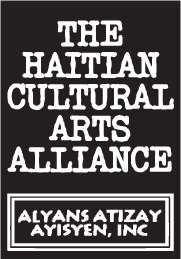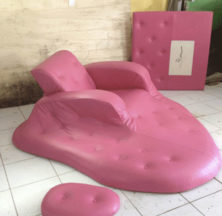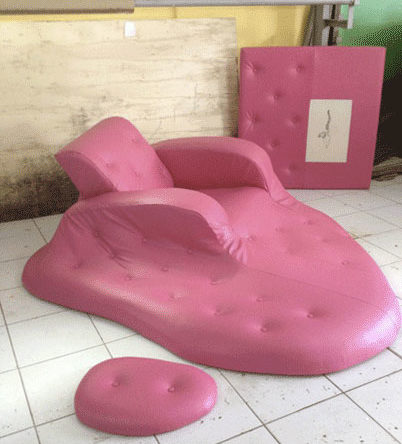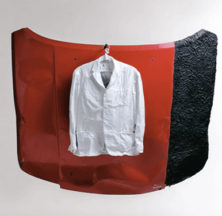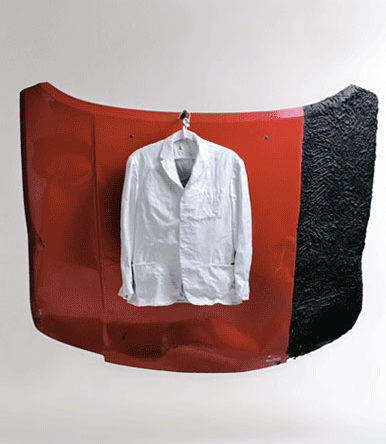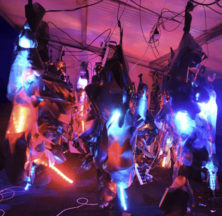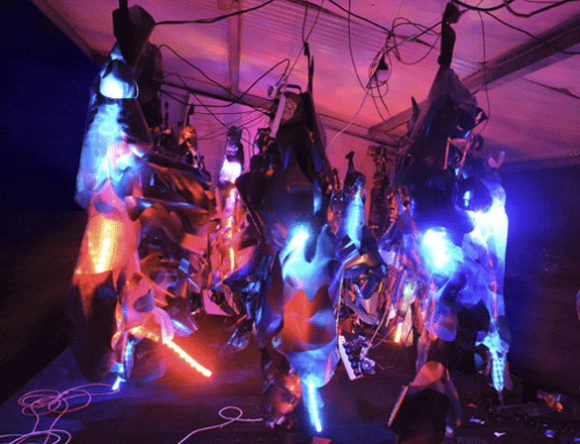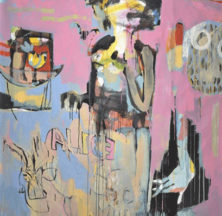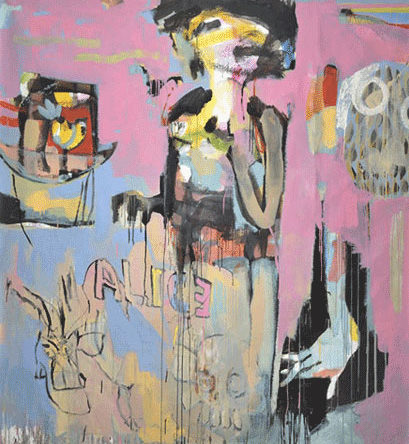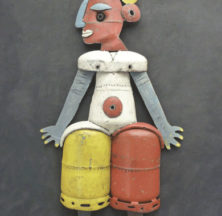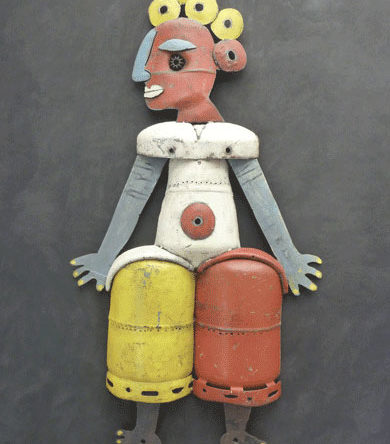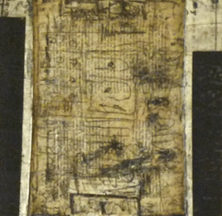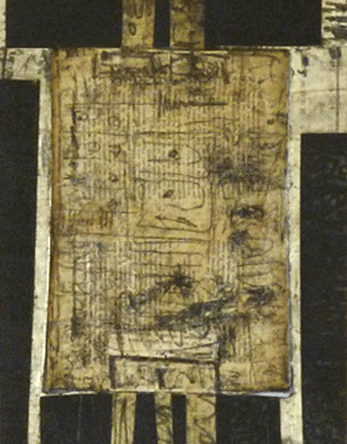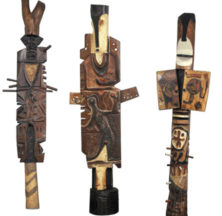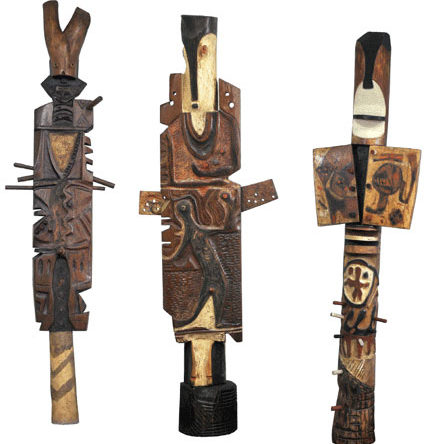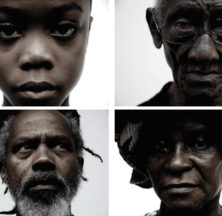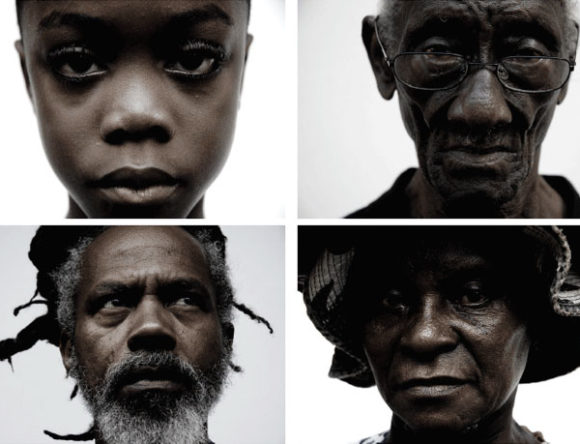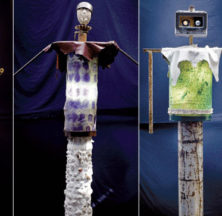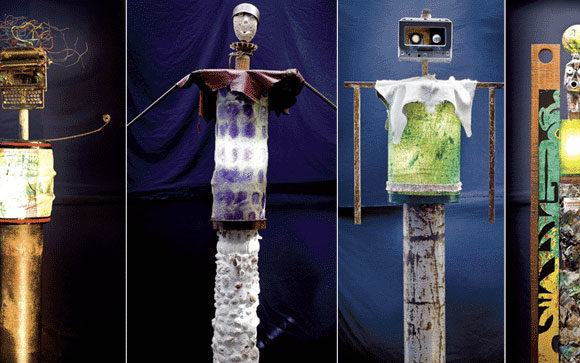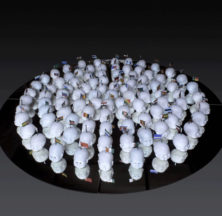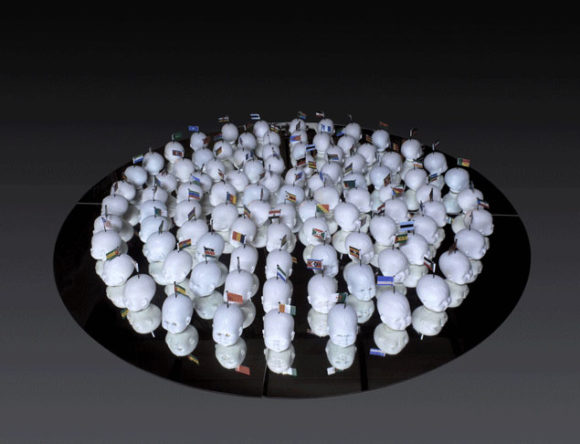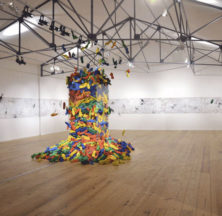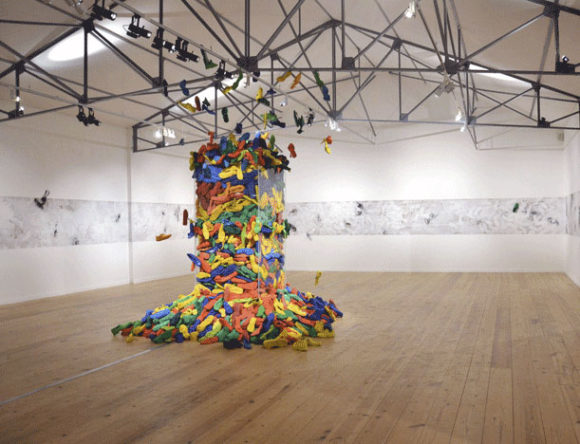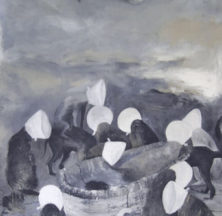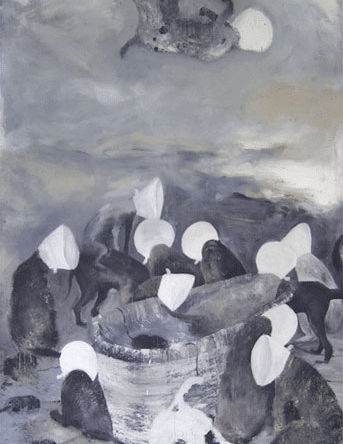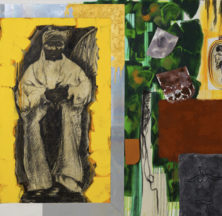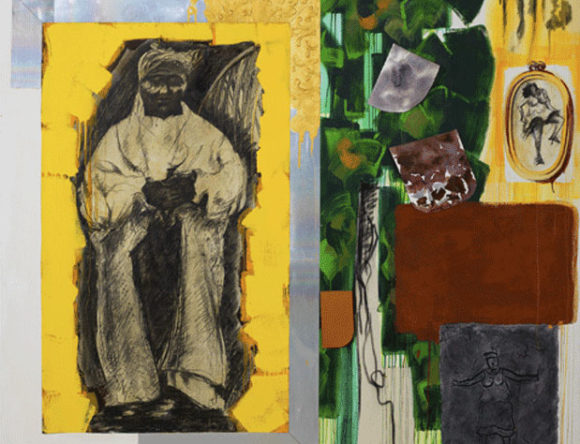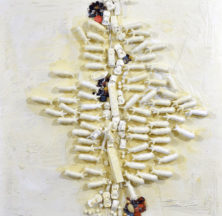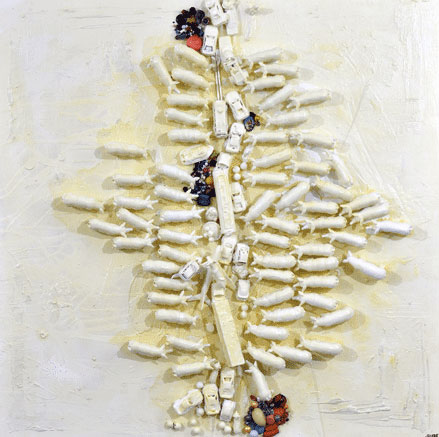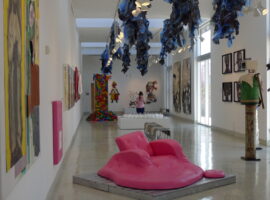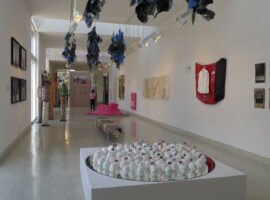
- aaa
GLOBAL CARIBBEAN IV
12 07 12 / 02 16 13
Little Haiti Cultural Complex
French West Indies & Guiana: Focus on the Contemporary Expression
Overview
We are very pleased to present, in this still-sparkling new Miami facility, a group of works from a part of the Caribbean that – for lack of a better word – have been coined as “French.” For me this story starts about twenty years ago, when a group of Antillean artist friends in Paris asked me to join in an effort to present works in the lofty Chateau des Ducs de Bretagne in the city of Nantes, France. That exhibit, aptly named “Mawon, Marroon, Cimarron, Marron” was part of a larger effort initiated by the French authorities to commemorate the abolition of slavery in their colonies. In this context, the ideologies and conflicts that had allowed that perfidious human institution to flourish for centuries, and ultimately collapse, were taken down from dusty shelves and scrutinized once again. But something new was added to the discussion. Young contemporary artists were asked to join in the ongoing debates. For many of them, scars that should have been long healed was made visible in their art, available to the gaze under the medieval chandeliers of that mighty fortress. I promised myself then that I would one day work to bring their works to these shores. My only regret is that it has taken so long. This is a different group of artist than those of the Mawon exhibit, but they are animated by the same spirit. The works selected here express an exuberant will to assert their singularity. Most importantly, behind these creations lies an intellectual argument that belies the assertions made by many that belies the common assertion those somnolent islands have and can only produce works lulled by the verdant seas that bathe their pristine beaches.
Each of them has, against the odds, managed to produce work that fits the concept of “Marronnage”. Working and creating art that from a distant periphery, they address issues that are as relevant today as they were two centuries ago: how to survive and keep one’s dignity in the face of a disparaging ethnocentric metropolis. The condescension from today’s center is a pale legacy of the professed blindness that sentenced millions of deported Africans to perish in a system justified with a veneer of civilization. Some might claim that the very existence of this exhibit shows that much has changed since then. Certainly plantation slavery is gone. But its sequels are still felt today, visible in many conflicts that rage throughout our planet. Today’s conflicts have to be confronted as forcefully as slavery was attacked back then. The quest for true liberty is as central to the human spirit as the quest for economic equality. But both remain as elusive as they did in past centuries. Perhaps the concept of the maroon – a group of self-liberated slaves who took to remote mountain refuges in faraway colonies, defined by skin color and inheritors of a bloody history – cannot be applied to this group of savvy contemporary artists. And yet something remains which can only be defined as a fierce commitment on their part to persevere and develop their discourse in absolute freedom!
This historical background is important as we discuss the visual production of a small corner of this planet. But we must also understand the history of art from this region. I have secured for this exhibit the expertise of a few scholars and researchers, hailing mainly from Martinique, to help elucidate certain aspects of the development of the region’s scene. Gerry L’Etang, eminent scholar and ethnologist, addresses the historical context in which the French Antilles’s artistic expression has evolved, from the plantation system of colonial times, through the artistic production of the 19th and early 20th century. Renée-Paule Yung-Hing, an ardent promoter of Antillean art and member of the regional council of Martinique, addresses the modern artistic problematics of the region, highlighting the insertion of these territories into the framework of Post-Colonial France as full fledged “Département d’Outre Mer” (Overseas Departments). Dominique Brebion, a contemporary art critic who has recently been mounting exhibits hailing from the region, offers us her assessment of the artists presented in this selection. Thanks to her direct contact with them, she is able to illuminate the problems faced by the region’s artists in their attempts to insert themselves into a wider world of artistic endeavour.
Their contributions are invaluable for the way they shed light on this region’s artistic production. But I must add that this exhibit in no way claims to be an exhaustive survey or a comprehensive overview of the rich artistic production of the region. I wish I could have invited many more artists or – even better – have access to unlimited space either in the gallery or the accompanying catalog, so that I could give free reign to writers and artists. Alas, that is not the case….
To complement this exhibit we have partnered with the Green Family Foundation through its director Ms. Kimberly Green, whose general interest in the Caribbean and its artistic expression is clear. By making available the audio archives of the legendary American folklorist Alan Lomax, particularly the ones covering the French Antilles, she enables us to explore the region’s musical legacy in understanding the broader contexts that define the particularity of the region. The sampler of Mr. Lomax’s musical recordings from the 60’s and other documents from the region highlight the deep historical legacy shared within the French Antilles and with the larger Caribbean basin. This legacy has also permeated the continental United States, in particular South Florida.
I wish to thank profusely all of our partners all of whom have contributed considerable efforts in the production of this exhibit. First and foremost are all the artists who are toiling away in their studios and who have placed their confidence in my by entrusting their works for this production. I thank the writers for their scholarship. The prestigious Fondation Clément in Martinique and it’s president Mr. Bernard Hayot have been instrumental in the discussions and decisions which enabled this project to get off the ground. They listened to me when I made a plea to have my colleague’s work from the French “départements” be present at the internationally famous Basel-Miami art fairs. To the most dedicated staff of the Fondation Clément I cannot say enough!
I must add that the Global Caribbean program of which this exhibit is the fourth installment is an initiative of the Institut Francais. I have closely followed their guidelines, which ask that we “put Caribbean Art and Artists in commercial situation.” We hope that in doing so the visibility of the region’s artist will be enhanced!
Credit has to be given as well to the Little Haiti Cultural Center, a city of Miami facility built for the sole purpose of serving the local Haitian community. We extend our profound gratitude for their understanding that, by opening their doors to this program and its larger vision of a greater Caribbean, we also enhance the visibility of the Haitian community not only locally but in a wider sphere. It is in this spirit that we, at the Haitian Cultural Arts Alliance, operate. We intend to familiarize our local youth with a larger regional context where a shared history and common concerns bind us in more ways than they might have considered.
Edouard Duval Carrié,
Artist/Curator,
Artistic Director HCAA
Artists
Gallery
¿Need more info?
To know more about this exhibition download our brochure
View More
Past Exhibitions
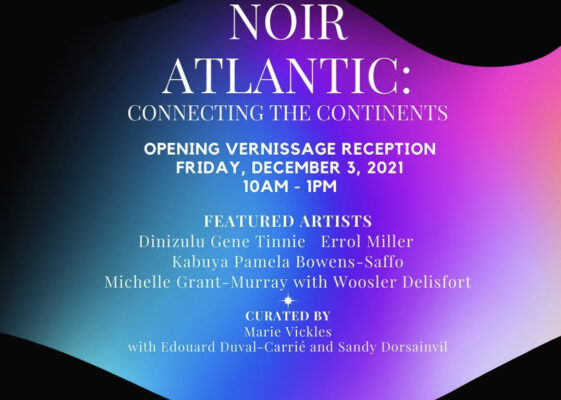
Noir Atlantic: Connecting the Continents
12 03 21 / 02 28 22
Little Haiti Cultural ComplexMore Info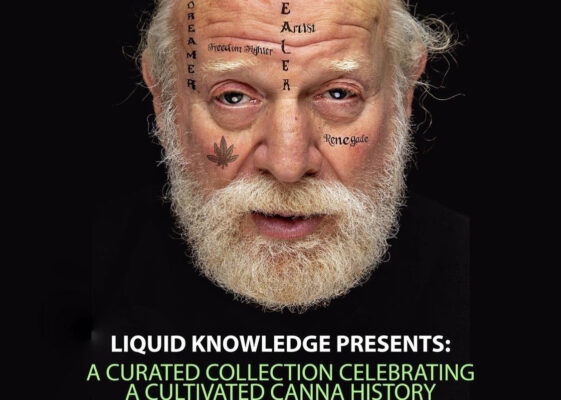
Liquid Knowledges II: A Hemp & Cannabis History
11 30 21 / 12 30 21
Magic City Annex GalleryMore Info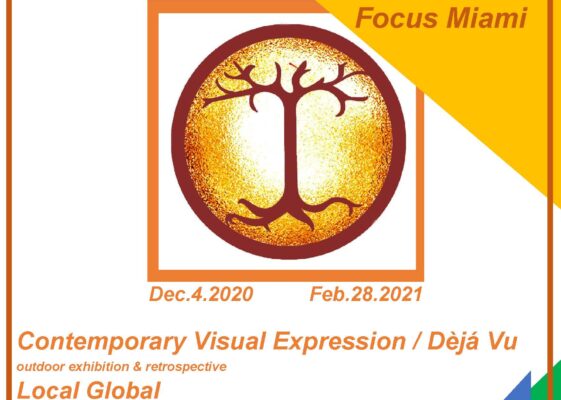
Global/Borderless Caribbean XII: Focus Miami
12 04 20 / 04 30 21
Little HaitiMore Info
Current Exhibitions
Upcoming Exhibitions
Upcoming Events
05 26 13 / 07 07 13
MARTINIQUE museum
French West Indies & Guiana: Focus on the Contemporary Expression
Overview
We are very pleased to present, in this still-sparkling new Miami facility, a group of works from a part of the Caribbean that – for lack of a better word – have been coined as “French.” For me this story starts about twenty years ago, when a group of Antillean artist friends in Paris asked me to join in an effort to present works in the lofty Chateau des Ducs de Bretagne in the city of Nantes, France. That exhibit, aptly named “Mawon, Marroon, Cimarron, Marron” was part of a larger effort initiated by the French authorities to commemorate the abolition of slavery in their colonies. In this context, the ideologies and conflicts that had allowed that perfidious human institution to flourish for centuries, and ultimately collapse, were taken down from dusty shelves and scrutinized once again. But something new was added to the discussion. Young contemporary artists were asked to join in the ongoing debates. For many of them, scars that should have been long healed was made visible in their art, available to the gaze under the medieval chandeliers of that mighty fortress. I promised myself then that I would one day work to bring their works to these shores. My only regret is that it has taken so long. This is a different group of artist than those of the Mawon exhibit, but they are animated by the same spirit. The works selected here express an exuberant will to assert their singularity. Most importantly, behind these creations lies an intellectual argument that belies the assertions made by many that belies the common assertion those somnolent islands have and can only produce works lulled by the verdant seas that bathe their pristine beaches.
Each of them has, against the odds, managed to produce work that fits the concept of “Marronnage”. Working and creating art that from a distant periphery, they address issues that are as relevant today as they were two centuries ago: how to survive and keep one’s dignity in the face of a disparaging ethnocentric metropolis. The condescension from today’s center is a pale legacy of the professed blindness that sentenced millions of deported Africans to perish in a system justified with a veneer of civilization. Some might claim that the very existence of this exhibit shows that much has changed since then. Certainly plantation slavery is gone. But its sequels are still felt today, visible in many conflicts that rage throughout our planet. Today’s conflicts have to be confronted as forcefully as slavery was attacked back then. The quest for true liberty is as central to the human spirit as the quest for economic equality. But both remain as elusive as they did in past centuries. Perhaps the concept of the maroon – a group of self-liberated slaves who took to remote mountain refuges in faraway colonies, defined by skin color and inheritors of a bloody history – cannot be applied to this group of savvy contemporary artists. And yet something remains which can only be defined as a fierce commitment on their part to persevere and develop their discourse in absolute freedom!
This historical background is important as we discuss the visual production of a small corner of this planet. But we must also understand the history of art from this region. I have secured for this exhibit the expertise of a few scholars and researchers, hailing mainly from Martinique, to help elucidate certain aspects of the development of the region’s scene. Gerry L’Etang, eminent scholar and ethnologist, addresses the historical context in which the French Antilles’s artistic expression has evolved, from the plantation system of colonial times, through the artistic production of the 19th and early 20th century. Renée-Paule Yung-Hing, an ardent promoter of Antillean art and member of the regional council of Martinique, addresses the modern artistic problematics of the region, highlighting the insertion of these territories into the framework of Post-Colonial France as full fledged “Département d’Outre Mer” (Overseas Departments). Dominique Brebion, a contemporary art critic who has recently been mounting exhibits hailing from the region, offers us her assessment of the artists presented in this selection. Thanks to her direct contact with them, she is able to illuminate the problems faced by the region’s artists in their attempts to insert themselves into a wider world of artistic endeavour.
Their contributions are invaluable for the way they shed light on this region’s artistic production. But I must add that this exhibit in no way claims to be an exhaustive survey or a comprehensive overview of the rich artistic production of the region. I wish I could have invited many more artists or – even better – have access to unlimited space either in the gallery or the accompanying catalog, so that I could give free reign to writers and artists. Alas, that is not the case….
To complement this exhibit we have partnered with the Green Family Foundation through its director Ms. Kimberly Green, whose general interest in the Caribbean and its artistic expression is clear. By making available the audio archives of the legendary American folklorist Alan Lomax, particularly the ones covering the French Antilles, she enables us to explore the region’s musical legacy in understanding the broader contexts that define the particularity of the region. The sampler of Mr. Lomax’s musical recordings from the 60’s and other documents from the region highlight the deep historical legacy shared within the French Antilles and with the larger Caribbean basin. This legacy has also permeated the continental United States, in particular South Florida.
I wish to thank profusely all of our partners all of whom have contributed considerable efforts in the production of this exhibit. First and foremost are all the artists who are toiling away in their studios and who have placed their confidence in my by entrusting their works for this production. I thank the writers for their scholarship. The prestigious Fondation Clément in Martinique and it’s president Mr. Bernard Hayot have been instrumental in the discussions and decisions which enabled this project to get off the ground. They listened to me when I made a plea to have my colleague’s work from the French “départements” be present at the internationally famous Basel-Miami art fairs. To the most dedicated staff of the Fondation Clément I cannot say enough!
I must add that the Global Caribbean program of which this exhibit is the fourth installment is an initiative of the Institut Francais. I have closely followed their guidelines, which ask that we “put Caribbean Art and Artists in commercial situation.” We hope that in doing so the visibility of the region’s artist will be enhanced!
Credit has to be given as well to the Little Haiti Cultural Center, a city of Miami facility built for the sole purpose of serving the local Haitian community. We extend our profound gratitude for their understanding that, by opening their doors to this program and its larger vision of a greater Caribbean, we also enhance the visibility of the Haitian community not only locally but in a wider sphere. It is in this spirit that we, at the Haitian Cultural Arts Alliance, operate. We intend to familiarize our local youth with a larger regional context where a shared history and common concerns bind us in more ways than they might have considered.
Edouard Duval Carrié,
Artist/Curator,
Artistic Director HCAA
View More
Past Exhibitions

Noir Atlantic: Connecting the Continents
12 03 21 / 02 28 22
Little Haiti Cultural ComplexMore Info
Liquid Knowledges II: A Hemp & Cannabis History
11 30 21 / 12 30 21
Magic City Annex GalleryMore Info
Global/Borderless Caribbean XII: Focus Miami
12 04 20 / 04 30 21
Little HaitiMore Info
Current Exhibitions
Upcoming Exhibitions
Upcoming Events
12 07 12 / 02 16 13

Global Caribbean IV – French West Indies & Guiana: Focus on the Contemporary Expression
We are very pleased to present, in this still-sparkling new Miami facility, a group of works from a part of the Caribbean that – for lack of a better word – have been coined as “French.” For me this story starts about twenty years ago, when a group of Antillean artist friends in Paris asked me to join in an effort to present works in the lofty Chateau des Ducs de Bretagne in the city of Nantes, France.
